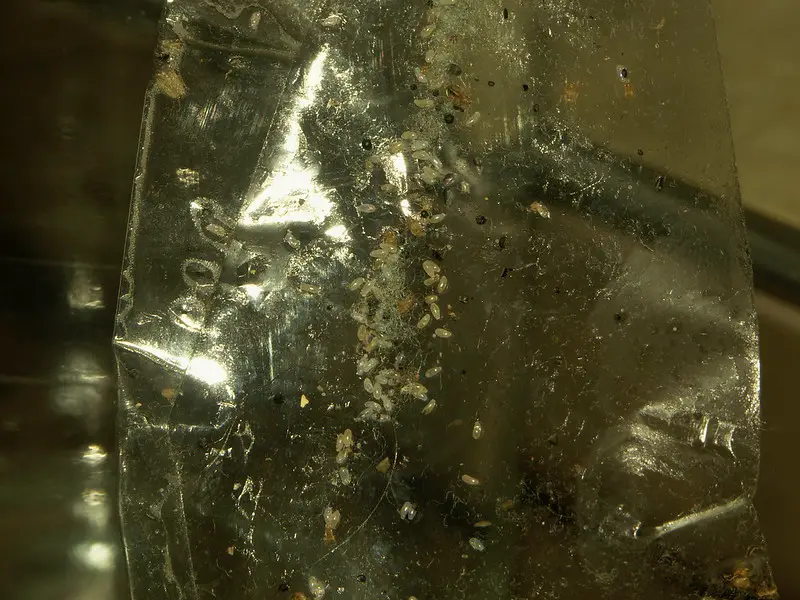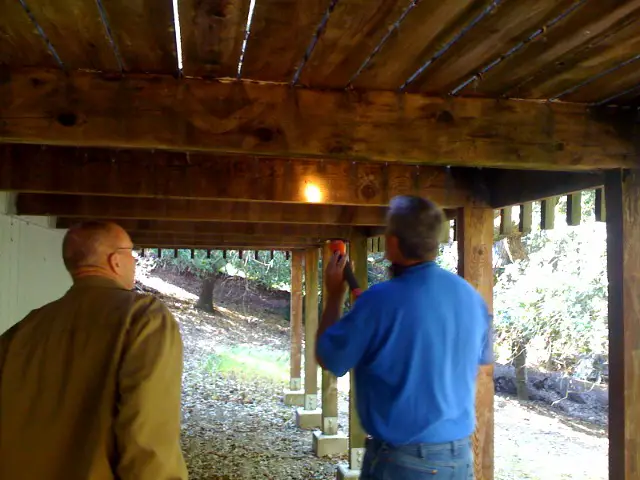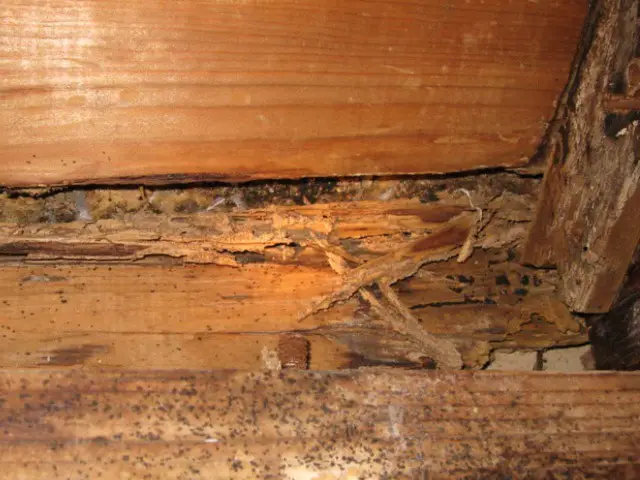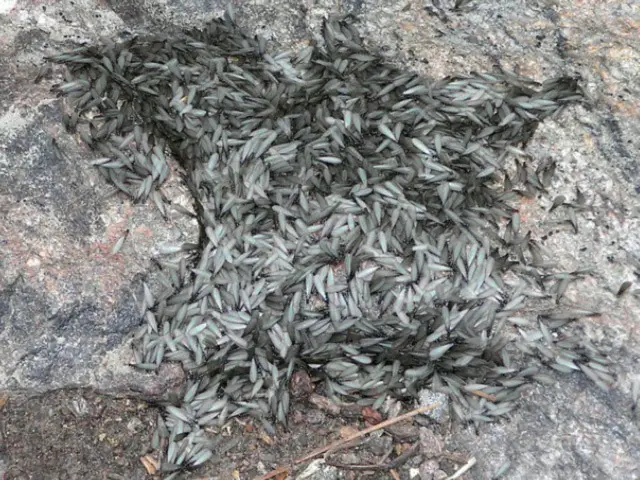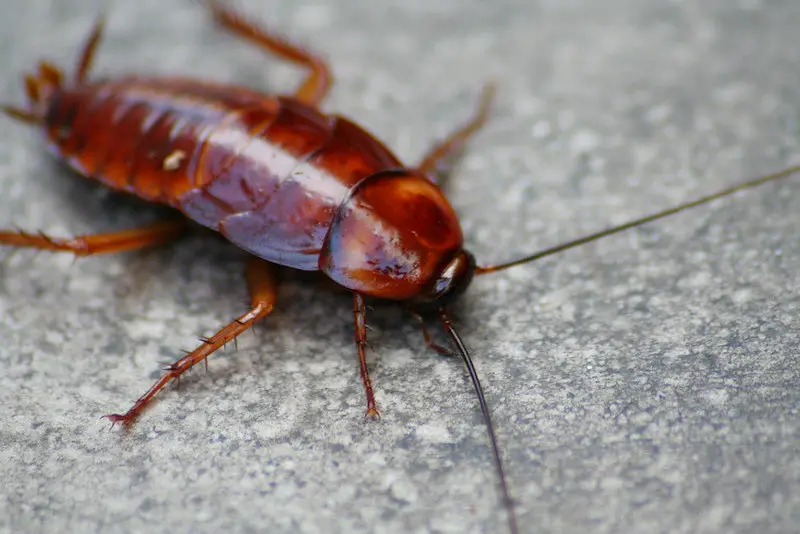How to check for bed bugs?
Its highly unlikely that you will ask yourself the question How do you know if you have bed bugs if these critters are already in your home. And the reason for this is because their sole purpose of entering your home is to find a source of food. And the only source of food that bed bugs want is blood, either human or animal, but mostly human. As such, your first indication that bed bugs might be present is by getting bed bug bites.
Make sure you read our article: “Can bed bugs bite thru clothing?”
Bed bugs locate their prey, so to speak, by sensing body warmth and also carbon dioxide, which is what we exhale when breathing. Once bed bugs have gotten into your home, they will scurry away to find hiding places. And because they are so tiny, they can hole up in the smallest of cracks and crevices.
What are the early signs of bed bugs?
Although bed bugs can feed during the daytime, it’s more usual for them to feed on humans whilst we are sleeping or resting for prolonged periods. Plus, they never stray too far away from the source of food. Although they can travel as much as 100 feet, they will hide in places that are within about 8-10 feet of a bed. Or even a couch, if used for sleeping or resting. Note also that bed bugs are wingless insects and cannot fly. Nor can they jump or hop. They can only crawl.
If you are wondering how do you know if you have bed bugs and have not gotten any bed bug bites, it’s unlikely that you have bed bugs in your home. However, it’s also possible that they could have just recently entered the home and have not yet become active. If that is the case, you will not have to wait long, as these nasty critters need to feed on a regular basis.
To be on the safe side, especially if you are feeling a bit paranoid about the possibility of bed bugs in the home, you will need to thoroughly examine the bed or beds, including all surrounding areas. That means examining all bedclothes, the bed frame, box springs, headboard etc. Also, all clutter from the bedroom should also be examined and removed, especially from under the bed. The things to look for are the bugs themselves and their signs, such as shed skins, fecal spots, blood spots, and bed bug eggs.
You will need to use a good magnifying glass to do this properly, as they are extremely small, especially bed bug eggs, and not always easy to spot. It’s very important to have a vacuum cleaner on hand during all inspections to help capture and contain any bed bugs that are found.
Don’t use a vacuum unless it has a bag fitted to collect bugs and other debris. If you suspect that bed bugs are present, a thorough vacuum clean of the complete household should be done, paying particular attention to the most suspect areas, such as bedrooms.
Make sure to vacuum all carpets, mattresses, sofas and any upholstered furniture, also all soft furnishings and curtains. Don’t neglect other furnishings, such as chairs, wardrobes, nightstands etc. Use the appropriate attachments on the vacuum cleaner to get into cracks and crevices on the walls and floor and along baseboards.
Related post: Do Spiders Eat Bed Bugs?
Bed bugs, especially the eggs (stuck to surfaces), can be difficult to dislodge. The best results will be achieved by moving and scraping the end of the suction tip along with infested areas, such as seams and fabric folds of beds and sofas and the perimeter edge of wall-to-wall carpets.
Use a spatula, if necessary. Eliminating all bed bugs from beds can be a problem, especially if there are holes or tears in the fabric, as the bugs and eggs may be inside as well as outside. Once you have finished, make sure you dispose of the vacuum bags in a sealed and labeled plastic bag for disposal outside of the house.
Finally, one way to answer your question about how you know if you have bed bugs is to utilize this handy tip. First, move the bed away from any walls it may be touching, and make sure no bedclothes are touching the ground. Next, smear vaseline, or petroleum jelly, over the base of all legs on the bed, covering about one to two inches to be sure. Bed bugs cannot fly or jump: they can only crawl. Thus, their only means of access to the bed is via the legs, and if bed bugs are present, they will get stuck in the vaseline.
How do you get bed bugs?
The common bed bug prefers to feed – that means to suck your blood – on humans. Bed bugs also chickens, mice, rats, bats, rabbits, guinea pigs, and birds. Bed bugs are much less interesting in pets such as cats and dogs. Therefore, pets are not a major host for bed bugs. The other species of bed bug found in the Northeast (the bat bug (C. pilosellus)) prefers bats, but when the bats migrate for the winter, these parasites may venture into our living spaces; in a pinch, humans will do.
This appears to be the most common method whereby bed bugs spread from place to place. By staying in infected places like hotels, hostels, dormitories, and such, bed bugs can easily get into your luggage or clothing. In fact, anywhere that has a regular turnover of occupants can be a likely place. Indeed, theatres, prisons, laundromats and public transportation are also places where bed bugs have been found.
You can never be too careful nowadays where bed bugs are concerned, so if staying in a hotel or hostel, always first place your luggage and any other items you have in the bath. Whilst a hotel might claim to be bed bug free, it’s impossible to know for sure. You may want to get into the habit of checking their bed for signs of bed bugs, which was a common practice in the past. This will entail examining the bed sheets and upper and lower seams of the mattress and box springs, especially along with the head of the bed. Examination behind the headboard is also advised, as this is a frequent hiding place for bed bugs in hotel rooms. Just remember that headboards are usually heavy and cumbersome, so care is advised. If bed bugs are discovered, you can request another room, preferably in another area of the building.
Should you experience itchy welts suggestive of bed bug bites during your stay, it would be a good idea upon returning home (and before unpacking) to place all clothing in disposable plastic bags and directly into the washer and or dryer.
How do You Get Bed Bugs
1) By Hitching a Ride in Your Luggage or Clothing
2) Via Recently Purchased Secondhand Furniture or Soft Toys
Another frequent method of gaining entry to your home is via infected secondhand furniture, such as beds, couches and upholstered seating. Sometimes, even new furniture can harbor these insects! It’s important to inspect new and used furniture before bringing it inside. Look in narrow spaces, along the seams, under folds of cloth, and under cushions.
3) Via an Adjoining Property
If you live in an apartment, or a terraced house or a property that is physically connected to another, it’s possible for bed bugs to travel from one to another. Because of their tiny flat size, bed bugs can move through very small openings, crevices, or cracks via ducts that carry electrical wiring and through the openings where pipes/wiring are positioned. Although difficult to establish if this is the method whereby bed bugs have entered your home, you need to be aware of the possibility. Remember, too, that a bed bug infestation in your home can easily spread to an adjoining property, as just described.
4) Via Animals or Birds
Fortunately, bed bugs don’t just magically appear in our homes. They have to be carried in by someone, either human or animal. Also, they are wingless insects, and while they can travel quite long distances (300 feet or so), they can only crawl.
How to kill bed bugs in a mattress?
One of the most annoying aspects of any bed bug infestation is that these nasty critters always strike and bite us when we are least expecting it. And that is usually when we are sleeping. And because bed bugs will always hideout within eight to ten feet of where we sleep, the bed and all its related components is a favorite spot for bed bugs to conceal themselves.
How to kill bed bugs in a mattress might take some effort, especially if the bugs are heavily entrenched; also, if there are holes or tears in the mattress, it’s quite possible that they could have gotten inside. If this is the case, it might not be possible to rid the mattress of them all unless you want to literally take the mattress apart. And if that is the case, you would be better off disposing of it.
As bed bugs will often conceal themselves within the mattress’s seams, tufts and crevices, a thorough inspection will be necessary. Use a vacuum cleaner whilst doing this. Bed bugs, and in particular the eggs, will be stuck to surfaces, and they may be hard to dislodge. Move and scrape the end of the suction tip along potentially infested areas, such as the seams and fabric folds, as this is usually the most effective way. Use a spatula, if necessary.
Once a thorough examination and vacuum have been completed, there are two options to prevent any re-occurrence of bed bugs. The first is to sprinkle a substance known as Diatomaceous Earth in all bed bug infestation-prone sections of the mattress, such as folds and crevices. This is a talc-like powder that is the fossilized remains of marine phytoplankton. It’s almost pure silica, and if you were to examine it under a microscope, it would appear almost like shards of glass. When the bed bugs come into contact with it, they dehydrate and die. This is because it gets into their exoskeleton joints, puncturing their bodies. It is also a completely nontoxic substance and totally safe to use.
The second method of how to kill bed bugs in a mattress requires encasing the mattress in a protective cover, similar to the ones used for allergy relief. Once in place, any bed bugs that are inside the mattress will eventually die. However, as bed bugs can live in a somewhat dormant state for over a year, it will be necessary to keep it in place for at least this amount of time. But also remember that while it may keep the bugs imprisoned inside the mattress, it will not prevent others from crawling onto the cover.
Finally, it should also be pointed out that while the above gives you some idea of how to kill bed bugs in a mattress, it does not solve the underlying problem of how they got there in the first place as bed bugs can only crawl from place to place, it is most likely that other areas of the bed could be infected too; not to mention the many other areas of the bedroom that bed bugs are prone to hide in. While you might get rid of bed bugs in your mattress, it will not be long before they come crawling into your bed again unless a thorough and extensive eradication process takes place in all likely surrounding areas of the room.
This was a subject that was very much on my mind, just less than a year ago. I first discovered that we had bed bugs in our home when I noticed one of my sons constantly scratching one of her legs. Not knowing much about bed bugs at the time, l didn’t give it too much thought. However, it was only when my sister mentioned in a joking fashion that maybe it was due to bed bugs that l got really worried. After examination of her bed, l immediately knew we had a problem. Unfortunately, I was naive and thought that the problem was solved by just cleaning the whole area and changing the bedding. Little did l know how wrong I was.
Although l wondered how to get rid of bed bugs at home, it never really occurred to me just how difficult and stressful the whole process takes. These insects are not only difficult to eradicate, but unless you do things in a very systematic and logical fashion, your life can really become a misery.
If you are wondering how to get rid of bed bugs at home, the following steps should give you a good idea of how togo about it, and increase your chance of solving the problem in the fastest time possible.
First of all, you need to establish exactly how the bed bugs got into your home in the first place. In my case, it was due to my son picking them up in a hostel he had stayed in. l discovered that when l found them in one of her backpacks. But once bed bugs get into your home, they will head for the bedroom, as they are nocturnal creatures and always attack their victims when asleep.
They didn’t get the name bed bugs for nothing! There are a number of ways that bed bugs could have gotten into your home, so you should, first of all, ask yourself the following questions:
- Has someone in the family been on a trip that required luggage?
- Do they regularly carry other bags, such as backpacks etc., that they may place under (or beside) chairs or seats?
1) Where is luggage typically kept
2) Where is the luggage stored after emptying?
3) Does the affected person sleep or rest for extended
periods on a couch or similar in the home?
4) Where are dirty clothes and bed linens placed or stored?
5) Does anyone else visit your home with bags, a coat
or other items?
6) Where has the person visited in the last few months.
Places that they may have stayed in or rested for long
periods?
Answers to these questions will help you determine the extent of the infestation and where your bed bug inspection should start. But these questions should not limit you to where to look, as bed bugs can easily be found in many other places in the home, including bathrooms, living rooms and even laundry rooms.
Depending on how large the infestation is, there will usually be a number of places where the bed bugs lurk, associated with where people sleep or rest for extended periods. Also, because the bugs are extremely small and flat, it’s necessary to thoroughly inspect all along edges and cracks and in folds and seams. Also, check all screw holes in wooden pieces of furniture.
The things to look out for are bloodstains from crushed bugs or rusty (sometimes dark) spots of excrement (digested blood) on sheets and mattresses, bedclothes, and walls. Fecal spots, eggshells, and shed skins may be found in the vicinity of their hiding places. Oftentimes, an offensive, sweet, musty odor from their scent glands may be detected when bed bug infestations get really bad.
Once they are well established in the bed, they tend to spread out to other areas of the room. But keep in mind that they will always be within about ten feet of where you sleep. So to get rid of bed bugs at home, you are going to have to give the bedroom a thorough clean with a vacuum. All items, including any clutter that might be below the bed or other areas of the room, will need a minute examination before being bagged for laundering. This includes all bedclothes and coverings, clothing, soft furnishings, backpacks, luggage (if kept in the bedroom), shoes, soft toys etc. In fact, just about everything will need a really thorough inspection to be absolutely sure, as bed bugs can hide in the unlikeliest of spots.
Dressers and nightstands and should be emptied. Once emptied, they should be examined inside and out. Then they should be tipped over to inspect the woodwork underneath. Usually, bed bugs will be hiding in recesses, cracks, and corners. Other places for find bed bugs to hide include: along and under the edge of wall-to-wall carpeting (This is especially true behind furniture and beds); cracks in wood molding; ceiling-wall junctures; behind wall-mounted picture frames, mirrors, switch plates and outlets; under loose or torn wallpaper; amongst clothing and clutter stored in closets; and even (believe it or not) inside clocks, phones, televisions and smoke detectors.
Knowing how to get rid of bed bugs at home will require persistence and logic. Once you have completed the above and vacuumed just about every nook and cranny of the bedroom, including all furnishings, fittings, carpets, wall crevices and fissures and other likely spots, it will not mean that all bed bugs are gone from your home. In fact, this is just the first stage.
A number of procedures can be undertaken next to ensure any remaining bed bugs will not remain for much longer. Although steam is an effective method that exterminators often use, it is not the only method. Many bed bug sprays are suitable for use in the home, but l tend to shy away from these, as many use chemicals.
For anyone wondering how to get rid of bed bugs at home, l would always advise using a product called Diatomaceous Earth. This is a talc-like powder that is actually the fossilized remains of marine phytoplankton.
Because of its composition, it is almost pure silica. If viewed under a microscope, it looks like shards of broken glass. On any beetle-type insect that comes into contact with it, such as fleas, cockroaches and bed bugs, the diatomaceous earth works itself under their shell and punctures their body, which causes the bugs to dehydrate and die. It is extremely effective, and because it is non-toxic, it is completely safe to use. In actual fact, we can even eat it! It’s in lots of grain-based foods because lots of grains are stored with diatomaceous earth to keep assorted bugs from eating the grain!
Diatomaceous Earth will last forever, but to be effective, make sure to keep it dry, as if it becomes moist, it’s not as effective at killing bed bugs. Sprinkle it around beds and in all suspected areas, especially in crevices and cracks. It can also be used for electrical items that have harbored bed bugs, such as electrical sockets and outlets.
